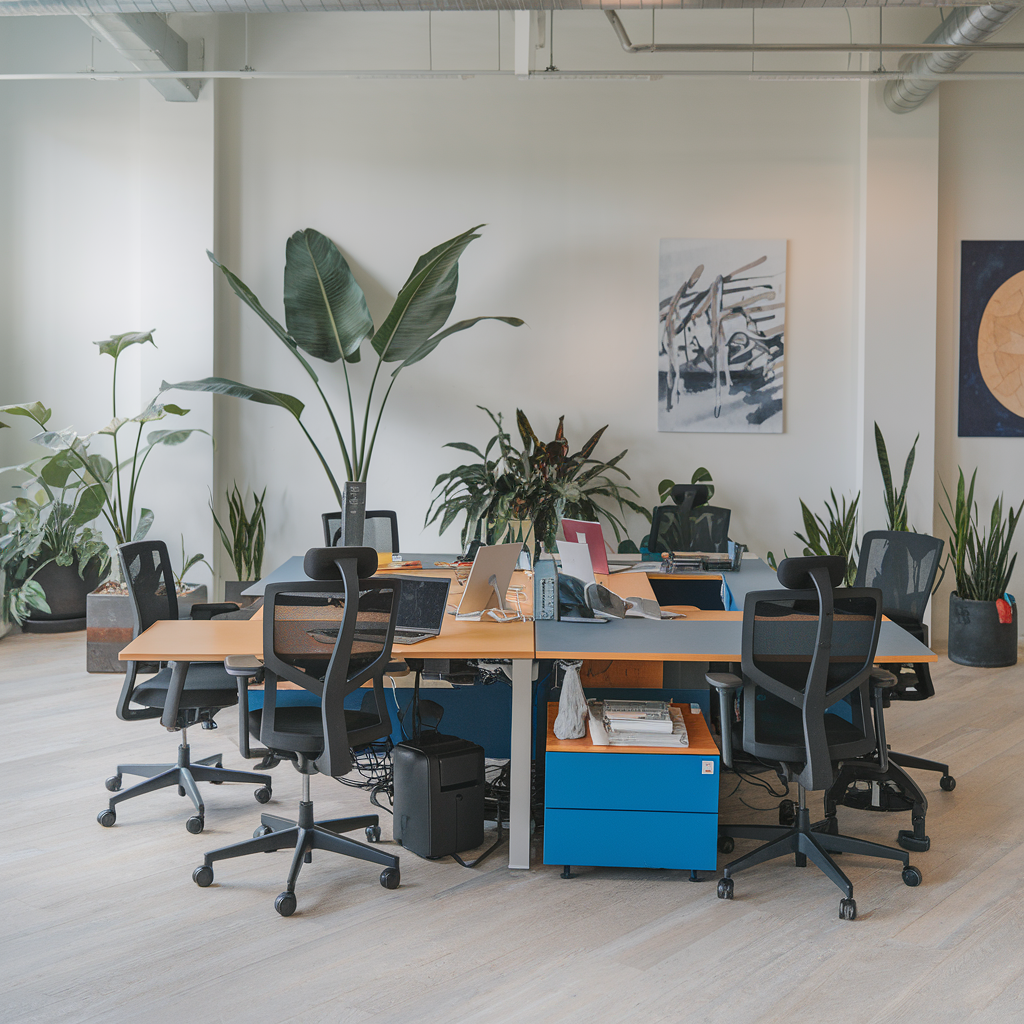How to Set Up a 4-Person Desk Cluster Efficiently
A 4-person desk cluster is one of the most practical and versatile layouts in modern office design. Whether you’re creating a shared space for collaboration or maximizing square footage in a compact office, an efficient 4-desk setup improves workflow, fosters communication, and optimizes resource use.
In this guide, we’ll walk you through the essential steps to design and arrange a 4-person desk cluster that aligns with your team’s needs while maintaining comfort, organization, and aesthetics.
Why Choose a 4-Person Desk Cluster?
Space-Saving and Scalable
Unlike individual desks that consume more square footage and isolate employees, desk clusters allow teams to work together while saving space. A 4-person cluster is compact enough for small offices yet large enough to support dynamic teams.
Encourages Team Collaboration
With team members seated in close proximity, conversations flow naturally, enabling quick decision-making and group brainstorming.
Explore designs in our Desk Clusters Collection to see what best suits your layout.
Step-by-Step Setup Guide
Step 1: Measure and Plan the Space
Accurate measurements ensure your desk cluster fits comfortably while leaving space for movement.
Recommended dimensions per person:
- Width (W): 47–63 inches (120–160 cm)
- Depth (D): 24–30 inches (60–75 cm)
- Height (H): 29–30 inches (73–76 cm)
Allow at least 36 inches (90 cm) clearance around the cluster for safe and comfortable access.
Step 2: Choose the Best Desk Configuration
There are several common layouts for 4-person clusters:
- Back-to-back: Two facing desks on each side
- Plus (+) shape: Desks form a cross, with a shared center
- Linear: Four desks arranged in a row
Each layout has different benefits. A plus shape maximizes symmetry and visibility, while linear works better for long rooms.
Read more layout insights in our article on Designing Collaborative Workspaces.
Step 3: Ensure Cable Management and Power Access
Use cable trays or under-desk power channels to keep cords organized and out of the way. Desks with integrated cable holes and charging ports are ideal.
Step 4: Add Storage and Accessories
Support your cluster with functional storage:
- Under-desk mobile drawer units
- Shared filing cabinets near the cluster (see Filing Cabinets)
- Vertical wall shelves for personal or team items
This keeps the workspace tidy and ensures all essentials are within arm’s reach.
Step 5: Consider Privacy and Acoustic Elements
While clusters are collaborative, team members may still need focus time. Add:
- Low-profile desk dividers
- Acoustic panels between seating zones
- Desk lamps for individualized lighting
Ergonomics and Comfort
Prioritize Adjustable Seating
Use ergonomic chairs with lumbar support and adjustable height. The ideal desk-chair combination promotes posture and minimizes fatigue.
Ensure Proper Lighting
Natural lighting is best, but also provide desk lamps or overhead LEDs with neutral tones to reduce eye strain.
Explore options that pair well with our Desks Collection.
Ideal Placement in the Office
Near Collaboration Zones
Position the cluster near whiteboards, meeting pods, or breakout areas to foster team flow.
Away from High-Traffic Areas
Avoid placing clusters next to doors, copy rooms, or kitchens where noise and interruptions are common.
Tips for Hybrid or Rotating Teams
- Use modular desks that can be rearranged for hybrid work setups
- Label personal spaces or provide shared storage units
- Maintain a clean-desk policy to keep the cluster functional for any user
Final Thoughts
Setting up a 4-person desk cluster efficiently balances collaboration, comfort, and clarity. It allows teams to work closer, share resources easily, and make better use of limited office space—all while supporting productivity and reducing distractions through thoughtful planning.
A successful setup requires more than just choosing the right furniture. It’s about aligning the layout with your company’s workflow, ensuring ergonomic well-being for every team member, and incorporating functional accessories like storage and cable management. By investing time in measuring your space, choosing the right configuration, and adding comfort-enhancing elements, you can create an environment where your team thrives.

